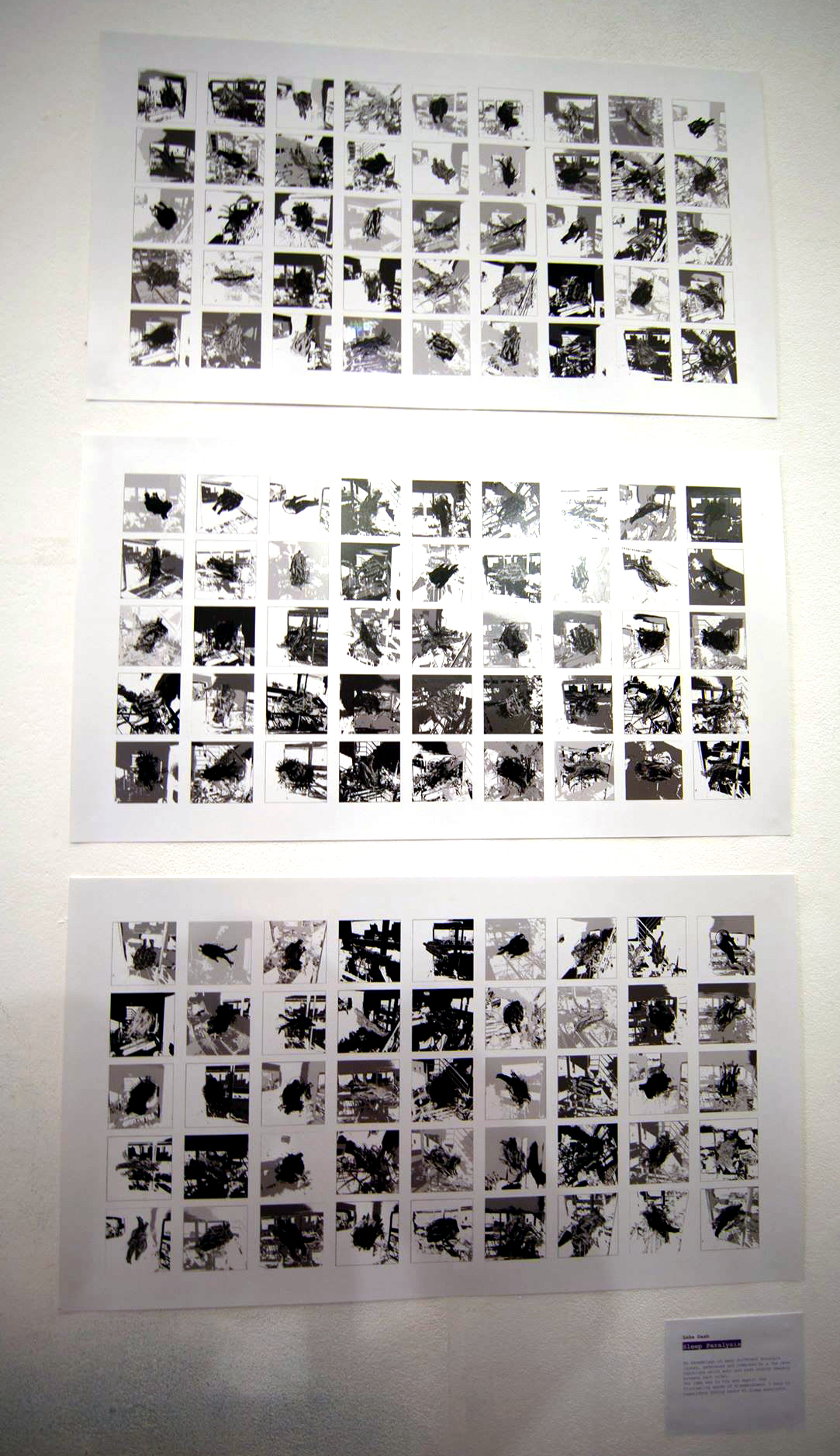



Procedural Print Series
Luke Dash
The brief for this project was to create a visual story in the form of a digital print, which was to be generated using Processing code. I wanted to try and reconnect with my Illustrative roots this time, so decided to try something a little bit more personal thematically. Since I had been experiencing very regular sleep paralysis at the time, I set about trying to figure out a simple assemblage that could represent that. The most prominent aspect of the experience for me was the sense of disembodiment in the dreams. Waking up and realizing that I am having that half-dream again usually comes with ambiguity in my sense of what the room is like, and my placement in it. I thought that since I was experiencing this several times in one night, repetition was another key theme.
A lot of this module was focused on trying to start getting to grips with simple ways of using datasets in our work. So to start, I set out making a simple data set that I felt represented the theme of disembodiment and spatial awareness. I chose a backdrop of a family members' holiday home, a place I am vaguely familiar with, and then I drew a few amorphous looking human figures to represent a loose representation of myself. The code I wrote used these sets of images and drawings to assemble new images.
The process video below shows more clearly how this process developed. But basically, the program stochastically steps through the data (background images and drawings), picks tonal thresholds and turns them into individual layers. Each layer is printed to the screen with a new color or shade of grey, and the process repeats itself a set number of times, and then the program moves on to generating another new image. This is repeated until a predetermined grid is filled with these new images, at which point the program exports the print and exits. As the program iterates through editions and images, the amount of data transformations and repetitions present in the figures changed, so that the images in each little frame got more and less chaotic over time. This was the part of the system which represented the fluctuating sense of disembodiment that I aimed to depict.
I feel like I learned a lot about the expressive power of simplicity in a programming context through this process. I came into this module hoping to make very complex interactive systems. But in setting out to really express something direct using the toolset (creative coding), I was surprised how much magic can be implicit in the simplest of mechanisms. The only thing I wish I could have done was to spend more money on larger prints, and ones with differently formatted grids. I will definitely be revisiting this workflow soon.































































